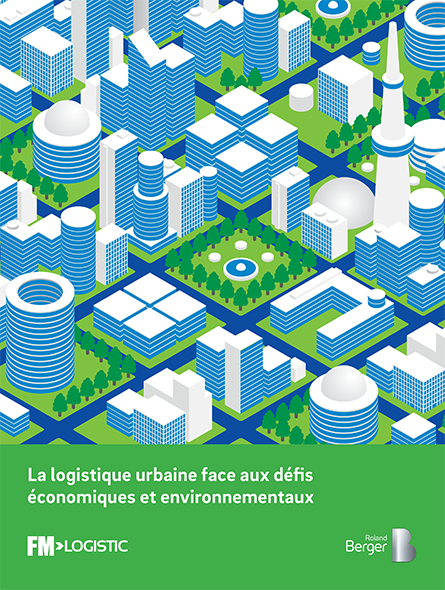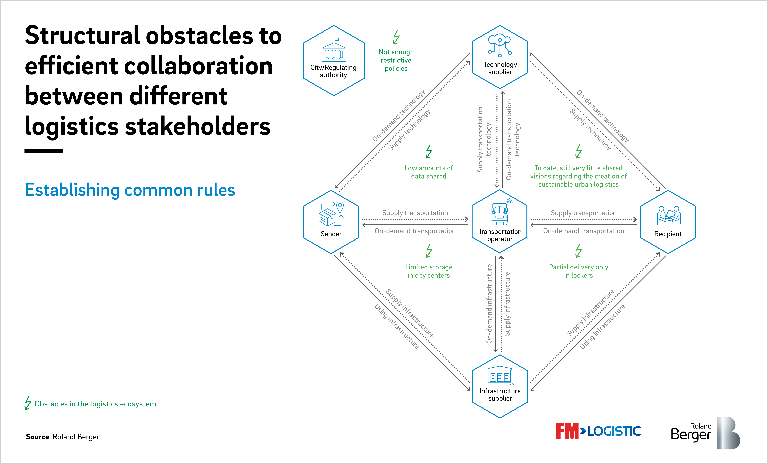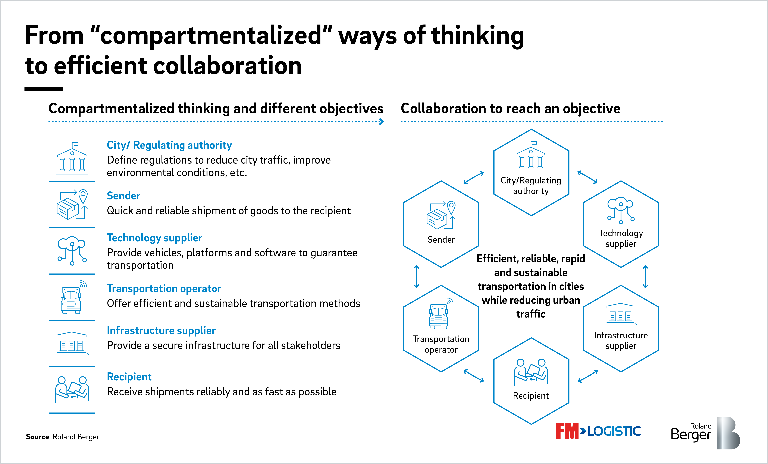1. Observations and challenges - Transportation and logistics faced with saturated urban spaces
The growth of urban logistics is going to strongly accelerate in the years to come. Each day, one out of ten people receive a package and the logistics market increases by 5% per year. By 2030, dense urban deliveries would increase by 8% per year according to the scenarios envisioned in thirteen countries. By 2050, worldwide urban cargo would increase by 2%.
Within the urban category (cities), the dense urban area is particularly saturated. Dense urban areas represent 5% of the population, i.e., 3 million people within the urban category in France and less than 1% of the area around five large cities: Paris, Lyon, Marseille, Nice, and Toulouse. These areas are, on average, 4.4 times denser than other large French cities and their congestion rate is in excess of 30%.
In these already saturated urban spaces, the increase in logistical flows thus confronts logistics stakeholders with four major challenges:
Issue 1 – Logistics stakeholders are confronted with increasing complexity in customer expectations: each individual becoming a fully-fledged logistics customer
B2C now defines the needs of logistics as much as B2B. The B2B sector represents 80% of the logistical flows to dense urban areas in France, but B2C, led by the growth of food and non-food-based e-commerce, is developing and is profoundly changing the standards for home delivery.
The dense urban population is the no. 1 target for at-home delivery services as it is characterized by purchasing power higher than the national average, limited motorization, and strong time restrictions. In Paris, more than 60% of the population chooses to have their food delivered, compared to 37% throughout the rest of the country.
Customers expect companies to make significant efforts in terms of costs, lead times, practicality, and flexibility. This trend is exacerbated by the one-upmanship of stakeholders, including Amazon Prime, and the development of “superfast” delivery services that change the frame of reference for waiting times.
Finally, the Covid-19 crisis has had consequences on the densification of urban logistics notably through an acceleration of the penetration of online food trade and the development of alternative modes to home delivery.
Issue 2 – Reducing traffic jams, air and noise pollution for urban logistics
The increasing intensity of logistic flows causes pollution for the population. Logistics vehicles represent 20% of urban traffic and are responsible for 30% of pollution in cities.
Faced with these nuisances, cities have developed several types of solutions to regulate logistics flows and to take them more fully into account in the development of their policies (e.g., traffic restrictions in certain areas; encouraging the conversion of utility vehicles to less polluting energies; establishing urban tolls for freight)…
Issue 3 – The intensification of French and European legislative frameworks
Furthermore, urban logistics stakeholders are faced with major changes in regulatory frameworks, accelerating the migration of their fleets to vehicles that are more environmentally friendly. In France, for example, the Mobility Orientation Law (2019) plans to make “mobility greener,” ending the sale of “fossil fuel” vehicles by 2040. In Europe, other cities have initiated similar approaches. Since January 1, 2020, diesel vehicles have been prohibited in the streets of Copenhagen and Oslo.
Issue 4 – A pool of jobs to professionalize
The Covid-19 crisis obviously accentuated the essential contribution of logistics to the country’s economy as well as the importance of urban logistics for city businesses. Urban deliveries create jobs, which are often controversial given the precarious nature of their contracts and working conditions. Regulating these jobs is therefore crucial to guarantee a minimum protection for people, more permanent contracts, and enhanced training for delivery drivers.








